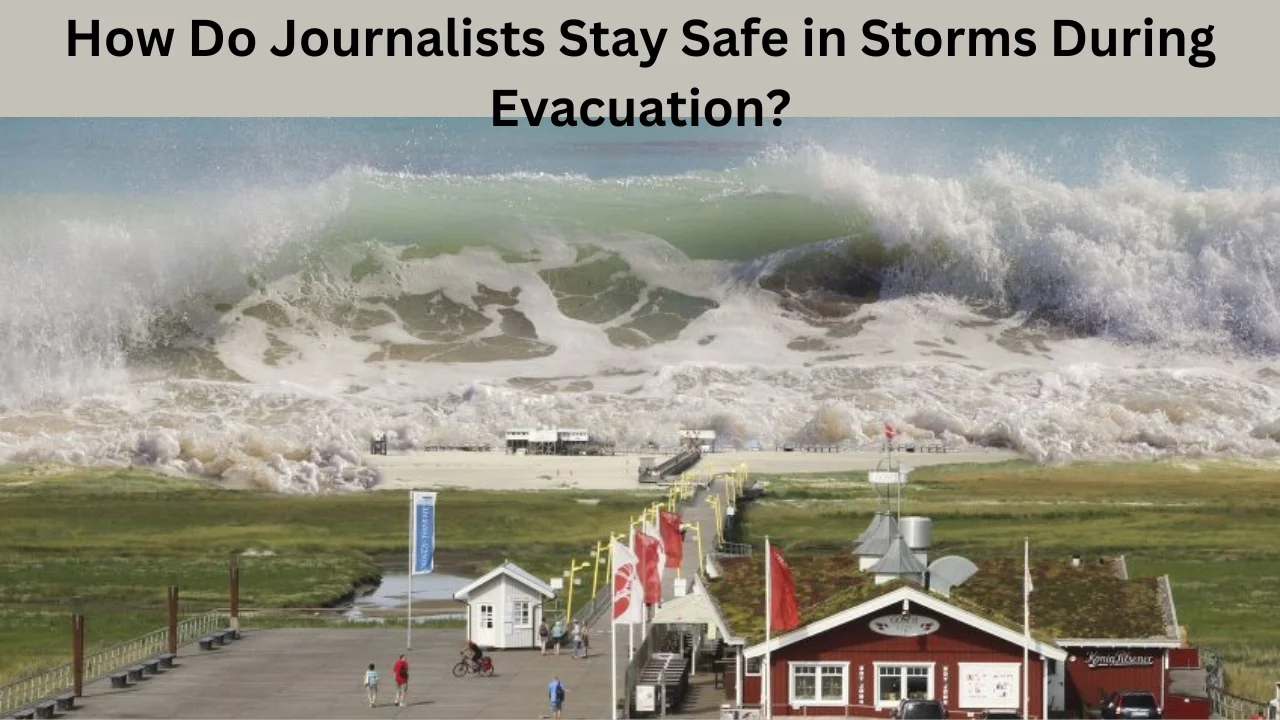How Do Journalists Stay Safe in Storms During Evacuation?

Journalists often find themselves in dangerous situations to deliver critical information to the public. When it comes to covering storms or severe weather events, their safety becomes a priority. Storms like hurricanes, tornadoes, and typhoons can escalate quickly, leaving little time for preparation. This raises an important question: how do journalists stay safe in storms during evacuation?
Journalists rely on a mix of preparation, real-time decision-making, and adherence to safety protocols to navigate such scenarios. Below, we explore their strategies for staying safe while ensuring accurate reporting.
Read More About Journalist and Other Celebrities Biography at Misty Severi Website.
Preparing for Storm Coverage
Before heading into storm-prone areas, journalists ensure they are well-prepared to address how do journalists stay safe in storms during evacuation. Preparation involves understanding weather patterns, having the right equipment, and knowing the evacuation protocols. The goal is to mitigate risks and maintain communication even in chaotic environments, ensuring they stay safe while covering critical stories.
Many journalists are equipped with storm-resistant gear, such as waterproof clothing, helmets, and sturdy boots. They also carry essential items like batteries, power banks, flashlights, and satellite phones. These tools are critical for staying connected and ensuring safety when traditional communication networks fail.
Real-Time Decision-Making
In unpredictable weather conditions, quick thinking is key. How do journalists stay safe in storms during evacuation? They rely on real-time data from weather apps, emergency alerts, and local authorities to make informed decisions. If conditions worsen, they coordinate with their team to determine the best evacuation routes and safe zones.
Journalists also establish communication plans before entering the field. This includes assigning roles, setting meeting points, and identifying backup plans in case of emergencies. These measures ensure they remain connected and avoid unnecessary risks during evacuations.
Adhering to Evacuation Protocols
Evacuation protocols are crucial for ensuring safety during storms, addressing the question of how do journalists stay safe in storms during evacuation. Journalists are trained to follow guidelines issued by emergency responders and weather experts. They avoid venturing into restricted areas and prioritize their safety over capturing dramatic footage, ensuring they can report responsibly while staying protected.
For example, when covering hurricanes, journalists monitor storm surge zones and avoid coastal areas prone to flooding. They also stay updated on evacuation orders issued by local authorities. These steps significantly reduce the risk of harm during severe weather events.
Importance of Training
Many media organizations provide safety training to their reporters. This training includes first aid, situational awareness, and disaster response protocols. Journalists learn how to assess risks, navigate dangerous terrain, and protect themselves in extreme conditions. These skills are essential for staying safe during storms and evacuations.
Read Also: HopTraveler.com: A Travel and Lifestyle Blog
Challenges Faced by Journalists
Despite their preparation, journalists face significant challenges when considering how do journalists stay safe in storms during evacuation. One of the biggest concerns is the unpredictability of weather patterns. Storms can intensify rapidly, leaving little time to evacuate safely. Additionally, damaged infrastructure, such as roads and bridges, can complicate evacuation efforts, making it even more critical to follow safety protocols and stay informed.
Journalists also face mental and emotional stress when reporting in such conditions. Witnessing destruction and human suffering can take a toll on their well-being. Media organizations often provide counseling services to help journalists cope with these challenges.
Common Safety Gear for Journalists Covering Storms
| Item | Purpose |
|---|---|
| Waterproof clothing | Protects against rain and water exposure |
| Sturdy boots | Ensures safe movement in flooded or uneven areas |
| Helmet | Protects against falling debris |
| Satellite phone | Maintains communication in remote areas |
| Power banks | Keeps devices charged during power outages |

Leveraging Technology for Safety
Technology plays a significant role in addressing how do journalists stay safe in storms during evacuation. Advanced weather apps and radar systems provide real-time updates, enabling reporters to anticipate changes in weather conditions and make informed decisions. Drones are also used to capture aerial footage without putting individuals at risk, allowing journalists to report safely while minimizing personal exposure to danger.
Moreover, GPS devices help journalists navigate unfamiliar terrain during evacuations. These tools ensure that reporters can find safe routes and avoid dangerous areas, even in low-visibility conditions.
Collaboration with Local Authorities
Another essential aspect of how do journalists stay safe in storms during evacuation is collaborating with local authorities. Police, firefighters, and emergency responders provide critical information about evacuation routes and safety protocols. Journalists often rely on these updates to plan their movements, avoid hazards, and ensure they can report effectively while prioritizing their safety.
Local authorities also assist journalists in accessing safe zones and shelters. These collaborations ensure that reporters can continue their work without compromising their safety.
Staying Calm Under Pressure
During evacuations, maintaining a calm and composed demeanor is essential. Journalists are trained to manage stress and make rational decisions under pressure. This helps them avoid panic and focus on their safety and reporting duties.
For example, when covering a tornado, reporters quickly assess their surroundings and seek shelter in sturdy buildings. They avoid staying in vehicles or open areas, which are highly dangerous during such storms.
Read Also: Redandwhitemagz .com: Ultimate Guide to a Knowledge Hub
Strategies for Staying Safe During Storm Evacuations
| Strategy | Explanation |
|---|---|
| Monitoring weather updates | Staying informed about storm developments |
| Following evacuation orders | Adhering to local authorities’ guidelines |
| Using safety gear | Protecting against environmental hazards |
| Establishing communication plans | Ensuring connectivity with team members and emergency services |
| Avoiding restricted areas | Reducing exposure to high-risk zones |
The Role of Media Organizations
Media organizations play a crucial role in addressing how do journalists stay safe in storms during evacuation. They provide safety training, equip reporters with essential tools, and establish protocols for covering storms effectively. These organizations also monitor the well-being of their reporters, encouraging them to prioritize safety over storytelling while ensuring they have the resources needed to navigate dangerous situations responsibly.
During large-scale storms, media organizations coordinate with local authorities and other news outlets to share resources and information. This collaborative approach helps journalists stay safe while delivering accurate and timely news to the public.
Conclusion
Covering storms is one of the most challenging aspects of journalism. Reporters must balance their duty to inform the public with their responsibility to stay safe. So, how do journalists stay safe in storms during evacuation? The answer lies in preparation, training, and adherence to safety protocols.
Journalists rely on safety gear, real-time data, and collaboration with local authorities to address how do journalists stay safe in storms during evacuation. Media organizations also play a vital role in supporting their reporters and ensuring their well-being through training and resources. By following these strategies, journalists can continue their work effectively while minimizing risks and prioritizing their safety during storms.






